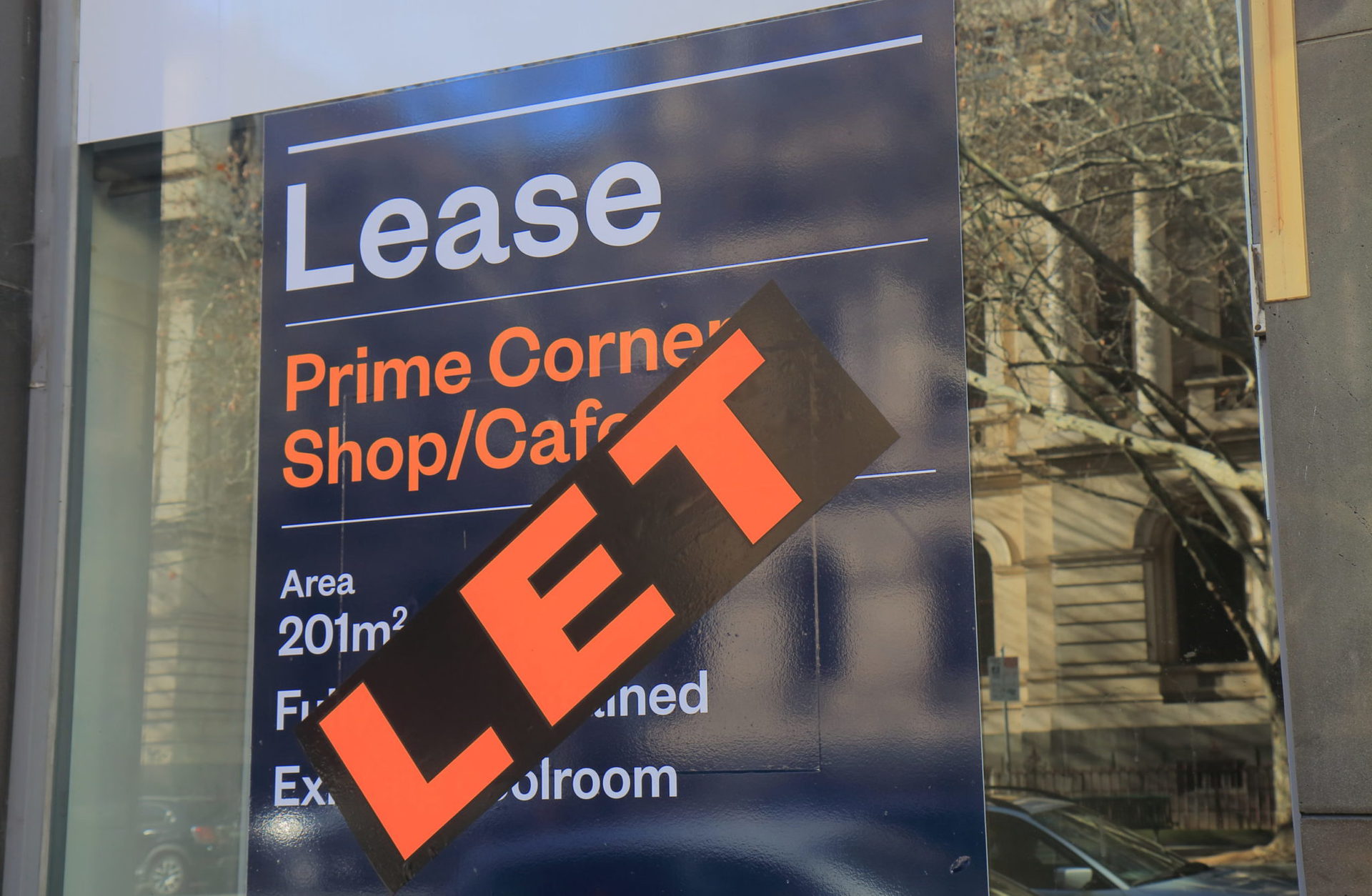Further to our previous update, the Commercial Tenancy Relief Scheme Act 2021 (‘New Act’) received royal assent by the Victorian Government on 6 August 2021 and the Commercial Tenancy Relief Scheme Regulations (‘Regulations’) were released on 24 August 2021.
The Regulations
The Regulations operate from 28 July 2021 through to 15 January 2022.[1] The aim of these Regulations is to help small and medium businesses (‘SME’) that generate less than $50 million in annual turnover to apply for rent relief. Such tenants must have ‘eligible leases’ (retail or non-retail) in order to apply.
What is an eligible lease?
In order to be an ‘eligible lease’ the lease must:[2]
- be in effect as at 28 July 2021;
- have an ‘eligible tenant;’
- not be a lease operating for agriculture purposes or where the tenant is a listed company.
Who is an eligible tenant?[3]
An eligible tenant is a tenant that:
- operated its business at the rental premises as at 28 July 2021:
- as a tenant carrying on a business in Australia; or
- as a non-for profit body pursuing its objectives in Australia; or
- as a deductable gift recipient that was or operated a public fund; and
- is a SME entity i.e. a business making less than $50 million at the end of 30 June 2021; and
- satisfies the ‘decline in turnover test’ (as set out below); and
- is neither a tenant under an excluded lease i.e. a lease operating for agriculture purposes nor a tenant that is a listed company.
What is the decline in turnover test?[4]
To determine whether a tenant satisfies the ‘decline in turnover test’ the tenant must:
- identify a decline in turnover in any three consecutive months between 1 April 2021 to 30 September 2021 (‘turnovertest period’)[5]; and
- identify the turnover in the corresponding three consecutive months in 2019 (‘comparisonperiod’);[6] and
- show a decline of 30% or more in the turnover between the ‘comparison period’ and the “turnover test period”.[7]
For Example: If the annual turnover of the months of July, August, and September 2019 (i.e. comparison period), compared to the annual turnover of the months of July, August, and September 2021 (i.e. turnover test period), was a 35% drop, then there is a shortfall of 35% (i.e. the relevant comparison turnover) and the tenant would have satisfied the ‘decline in turnover’ test.
How does a tenant request rent relief?[8]
As set out in last year’s update, during the operation of the previous COVID-19 regulations, the request for rent relief is relatively the same.
Rent relief is inclusive of outgoings, and the tenant and landlord must comply with the steps set out below.
Tenant’s obligations[9]
The tenant must:
- make a request in writing to the landlord accompanied by a statement from the tenant that states
-
- the tenant is an eligible tenant; and
- the tenant satisfies the ‘decline in turnover test’ and sets out:
- the tenant’s turnover for the ‘turnover test period’ (including the turnover test period used i.e. the three consecutive months); and
- the tenant’s ‘comparison turnover’ (including the relevant comparison period (i.e. the three consecutive months) or ‘specific alternative turnover method’ used); and
- the ‘decline in turnover’ of the tenant; and
- the reduction in rent that would satisfy the minimum requirements of an offer for rent relief; and
- any other circumstances the tenant would like to landlord to consider in making an offer for rent relief.
2. within 14 days of making the written request, provide evidence supporting the figures in its statement which include at least one of the following:
-
- extracts from tenant’s accounting records;
- BAS statements;
- statements issued by an ADI (authorised deposit taking institution i.e., a financial institution licensed by the Australian Prudential Regulatory Authority to carry on banking business) in respect of the tenant’s account;
- a statement prepared by a practicing accountant.
A statutory declaration by the tenant or authorised officer of the tenant must also be provided stating that the tenant is an eligible tenant and that the information provided by the tenant is true to the best of the tenant’s knowledge and belief.
If the tenant does not provide this information within 14 days, the rent relief request lapses but the tenant may apply for a new request. If the tenant makes more than three rent relief requests and they all lapse, the tenant cannot make any further requests.
Landlord’s obligations[10]
Upon receipt of the above, the landlord must offer rent relief under the eligible lease:
- within 14 days after receiving evidence required to support the tenant’s statement; or
- a different period as agreed by parties in writing.
The offer for rent relief (‘Offer’) must be made in writing by the landlord and must:
- relate up to 100% of the rent payable under the eligible lease during the relief period; and
- at a minimum be proportional to the tenant’s decline in turnover; and
- provide no less than 50% rent relief offered by the landlord be waived unless the parties agree in writing.
The tenant is taken to have accepted the Offer after 14 days have lapsed since the offer was made. The rent relief agreement may be confirmed by varying the existing lease or by any other form of agreement.[11]
Disputes
The New Act provides the Victorian Small Business Commissioner (‘VSBC’) will facilitate and arrange to resolve any disputes by mediation and monitor compliance between the parties in dispute under an eligible lease.[12]
If you are a commercial landlord or tenant and need assistance with understanding your rights under the New Act and/or Regulations please contact our Property Team for assistance.
[1] Regulations, r 4.
[2] Regulations, r 5.
[3] Regulations, r 9.
[4] Regulations, r 12.
[5] Regulations, r 13.
[6] Regulations, r 14.
[7] Regulations r, 15.
[8] Regulations, r 27.
[9] Regulations, r 27(2).
[10] Regulations, r 27(7).
[11] Regulations, r 12(12).
[12] New Act, s 10 and Regulations, r 40.




